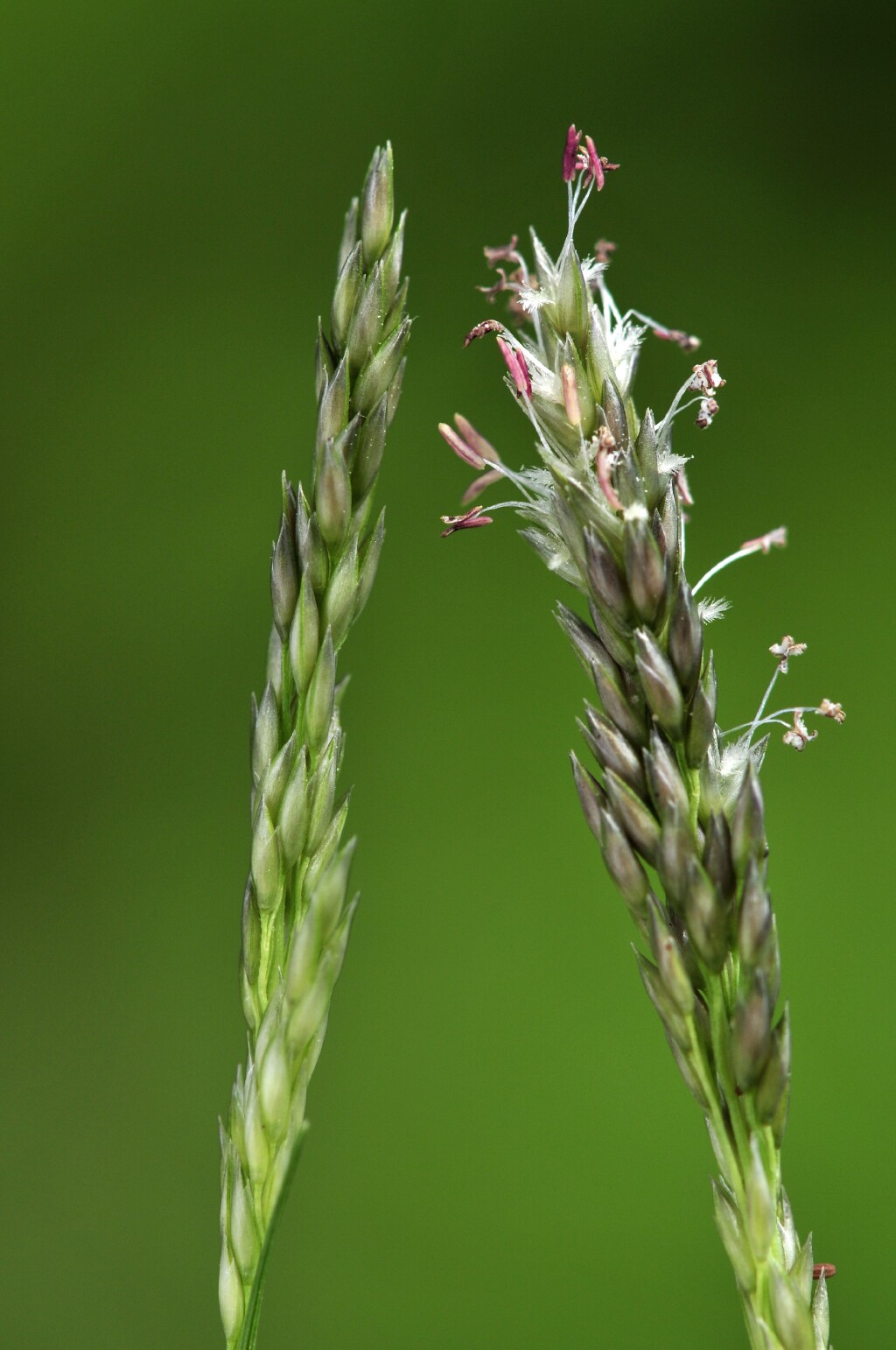Sporobolus virginicus
(L.) Kunth Salt-couchLong-rhizomatous perennial, producing erect or ascending tufts with culms mostly to 25 cm high. Leaves distichous, rigid, smooth, glabrous or with shortly ciliate auricles; blade inrolled from shortly above base, sharp-pointed, mostly to 5(–10 or more) cm long and 2 mm wide when flattened, ribbed by several more or less equivalent nerves; ligule to 0.5 mm long. Inflorescence a linear, oblong or narrowly ovate, spike-like panicle, 1–6 cm long and 4–9 mm wide. Spikelets 2–3 mm long, shining leaden-grey; glumes keeled, acute, the lower 1.5–2 mm long, the upper as long as the spikelet (or slightly shorter in rare 2-flowered spikelets); lemma and palea acute, subequal to upper glume; palea shallowly grooved along the midline between the 2 close-spaced nerves. Flowers mainly Sep.–Mar.
LoM, Wim, GleP, Brid, VVP, VRiv, GipP, OtP, WaP, Gold, CVU, GGr, DunT, EGL, WPro, HSF. All States. Widely distributed along coasts in all warm-temperate and tropical countries. Occurs along most of the Victorian coastline, on sand dunes, cliffs and bordering saltmarsh and freshwater lagoons. Known also from a few inland sites (e.g. southern Grampians, near Woorndoo on the basalt plains, Glenelg River below Harrow), with an old record from near Dimboola (but apparently not recorded from there since 1895). Records of the species occurring in the far north-west are not substantiated by specimens at MEL.
Walsh, N.G. (1994). Poaceae. In: Walsh, N.G.; Entwisle, T.J., Flora of Victoria Vol. 2, Ferns and Allied Plants, Conifers and Monocotyledons, pp. 356–627. Inkata Press, Melbourne.
 Spinning
Spinning



